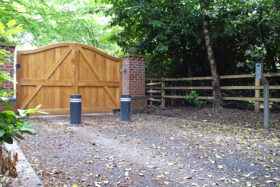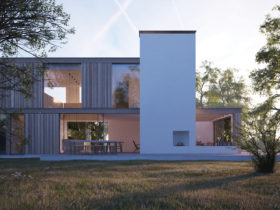
Use code BUILD for 20% off
Book here!
Use code BUILD for 20% off
Book here!Many people with an interest in good design choose to plan a self-build project out of dissatisfaction with the bland and uninspiring creations of the volume house builders. Others look to add a dash of flair and excitement to their existing home via an extension or refurbishment.
But what if your ideal home is your local authority’s worst nightmare? Or vice versa? How much can councils and planners influence design?
The government’s Planning Policy Statement 1 (PPS1) contains this promising declaration: “Local planning authorities should not attempt to impose architectural styles or particular tastes and they should not stifle innovation, originality or initiative through unsubstantiated requirements to conform to certain development forms or styles.” The advice does go on to say that it’s proper to support local distinctiveness, but even so, the government’s position seems refreshingly liberal. How does this advice translate at the local level?
Areas of great historic interest are often designated as conservation areas with tighter design control than elsewhere. Other areas with some special character may also have particular policies, usually with a view to preserving local traditional styles. Councils’ design policies vary in their wording, but most place greater emphasis on maintaining the status quo than promoting innovation and originality.
Councils often produce design guides that flesh out and illustrate their policies. But much depends on the particular likes and dislikes of individual planning officers. Consequently what’s acceptable in one area might be a non-starter in another.
Should your project involve a design that departs even slightly from the local vernacular, make sure your building designer can produce good quality plans that show the scheme to its best advantage. Well presented models, photo montages and computer-generated images can be all be used to good effect.
Present your scheme as something that has been carefully thought through and well executed. In most cases it needs to be accompanied by a design and access statement – your designer’s opportunity to set out the logic of the design, show how it takes into account its surroundings and enhances its setting.
Most councils encourage pre-application discussions, but when it comes to design, be wary about altering your scheme to meet the planning officer’s every whim as this might go beyond what they’re really entitled to ask for in a formal application. Do what you can to adjust your scheme if the planning officer offers constructive advice, but don’t be pushed into radical changes just to satisfy that officer’s personal tastes.
Innovative design is not always well understood. Neighbours, parish councilors and even district or borough councilors might have had little or no exposure to contemporary architecture, especially in rural areas. It’s especially important in such circumstances to demonstrate to these people that just because your scheme might be a bit different, it’s not going to be an eyesore.


Comments are closed.